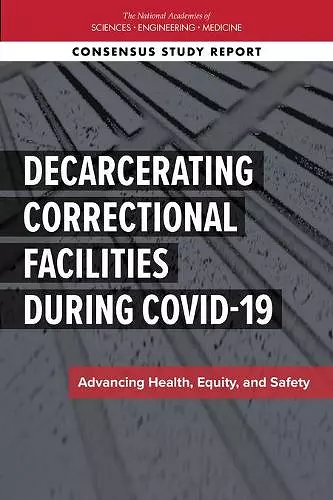Decarcerating Correctional Facilities during COVID-19
Advancing Health, Equity, and Safety
Committee on Law and Justice author Division of Behavioral and Social Sciences and Education author National Academies of Sciences, Engineering, and Medicine author Committee on the Best Practices for Implementing Decarceration as a Strategy to Mitigate the Spread of COVID-19 in Correctional Facilities author Bruce Western editor Emily P Backes editor Julie Schuck editor Emily A Wang editor
Format:Paperback
Publisher:National Academies Press
Published:18th Jan '21
Currently unavailable, and unfortunately no date known when it will be back

The conditions and characteristics of correctional facilities - overcrowded with rapid population turnover, often in old and poorly ventilated structures, a spatially concentrated pattern of releases and admissions in low-income communities of color, and a health care system that is siloed from community public health - accelerates transmission of the novel coronavirus (SARS-CoV-2) responsible for COVID-19. Such conditions increase the risk of coming into contact with the virus for incarcerated people, correctional staff, and their families and communities. Relative to the general public, moreover, incarcerated individuals have a higher prevalence of chronic health conditions such as asthma, hypertension, and cardiovascular disease, making them susceptible to complications should they become infected. Indeed, cumulative COVID-19 case rates among incarcerated people and correctional staff have grown steadily higher than case rates in the general population.
Decarcerating Correctional Facilities during COVID-19 offers guidance on efforts to decarcerate, or reduce the incarcerated population, as a response to COIVD-19 pandemic. This report examines best practices for implementing decarceration as a response to the pandemic and the conditions that support safe and successful reentry of those decarcerated.
Table of Contents- Front Matter
- Summary
- 1 Introduction
- 2 Correctional Facilities and COVID-19: Context and Framing
- 3 Considerations for Decarceration
- 4 Community Systems for Decarceration
- 5 Guidance for Depopulating Correctional Facilities
- References
- Appendix A: Recidivism, Incarceration, and Crime
- Appendix B: Biographical Sketches of Committee Members and Staff <
ISBN: 9780309683579
Dimensions: unknown
Weight: unknown
160 pages